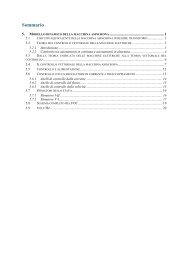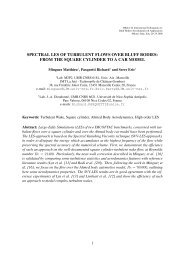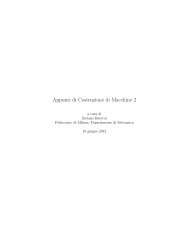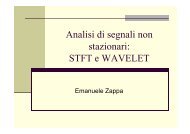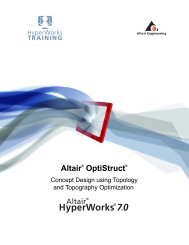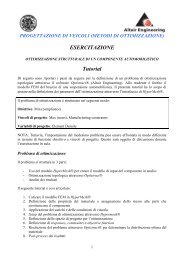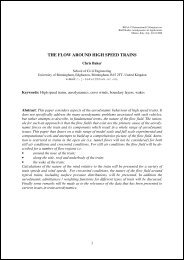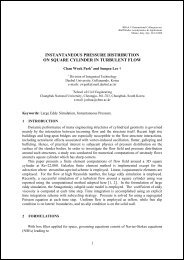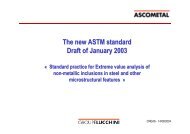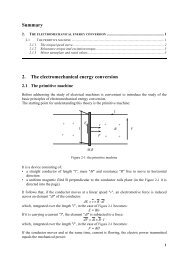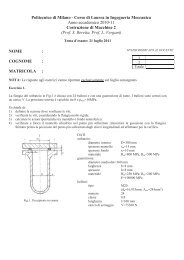AERODYNAMIC DESIGN OF A FORMULA SAE RACE CAR - BBAA VI
AERODYNAMIC DESIGN OF A FORMULA SAE RACE CAR - BBAA VI
AERODYNAMIC DESIGN OF A FORMULA SAE RACE CAR - BBAA VI
- No tags were found...
Create successful ePaper yourself
Turn your PDF publications into a flip-book with our unique Google optimized e-Paper software.
Richard G.J. Flay, and Andrew R. Hammond1 INTRODUCTIONThe Formula <strong>SAE</strong> competition was established in 1981 by the Society of AutomotiveEngineers (<strong>SAE</strong>) in the United States of America as an educational tool to develop theknowledge and skill base of the automotive industry at the University level. The competitionrequires that each team from their respective universities design, build, and test a small, openwheeled,single-seater race-car with the premise that a manufacturing firm has employed theteam to design the vehicle for a one-make racing series, for which the cost to reproduce eachof the vehicles must not exceed US$25,000. The competition comprises both static anddynamic events. The static events consist of a business and design presentation each of whichare marked by a panel of experts. A tilt test of the vehicle is also performed to simulatecornering and the determination of the height of the centre of gravity of the vehicle. Thedynamic events aim to test the vehicle in all aspects of competition car performance withacceleration, skid pan cornering, autocross and a final twenty-two kilometre endurance test.Marks are awarded for the performance of the vehicle in each of these tests as well as on thefuel economy of the vehicle during the endurance event. The total marks received from boththe static and the dynamic events determine the overall winner of the competition.Aerodynamic downforce is hugely exploited in the design of the modern race car (Refs.[1][2]). The performance benefits which can be gained through the resulting increase intraction has made the search for increased downforce and reduced drag a highly sought afterperformance edge in motorsport. The benefits of downforce and effective aerodynamic designin the Formula <strong>SAE</strong> car, however, were not entirely clear. It was the goal of the presentresearch to determine areas where the aerodynamic forces are most performance enhancing byutilising CFD as well as model testing in a wind tunnel equipped with a moving belt groundplane, and then to validate the predictions using on-road measurements. Further details areavailable in Ref. [3].2 NUMERICAL MODELLINGThe purpose of the CFD analysis was primarily to design the body (including side pods) andthe under-tray of the vehicle prior to carrying out wind tunnel testing. The CAD models ofthe car body and under-tray were constructed using ProEngineer Wildfire 2.0, the-0.8Lift coefficient-1ExhaustTemp. 300CExhaustTemp. 450CExhaustTemp. 600C-1.20 0.02 0.04 0.06Exhaust mass flow rate, kg/sFigure 1: Effect of rear diffuser tunnelexhaust mass flow rate and gas temperatureon the lift coefficientFigure 1 Photograph of half-scale modelmounted in wind tunnel above moving beltground plane2



